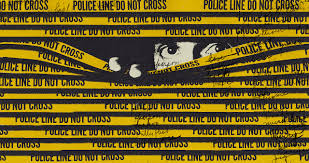Since the dawn of U.S. involvement in the Middle East, the nation of Iran has been a thorn in the side of the Western World. We’ve had no trouble sending troops into Iraq and Afghanistan, but there remains an international consternation over sending troops into Iran.
This apprehension stems from the fact that Iran was never colonized by a European power. Indeed, this might explain why Iran is what it is: a dangerous nation riddled with corruption and disregard for global peace, a nation that we can no longer afford to ignore.
Although Iran constantly stresses that its uranium enrichment programs are exclusively for peaceful purposes, former International Atomic Energy Agency chief Hans Blix said on January 7th, that the overt secrecy surrounding the programs suggests something far more sinister.
Indeed, our negotiations with Iran, which have been ongoing for the last seven years, have done little to curb Iran’s efforts, and have instead given them more time to research and develop weapons systems and technology.
Even more alarmingly, a ideological trend that is becoming more and more prevalent in the Obama Administration and in the State Department is the ideal that people are becoming more comfortable with and even reconciling the fact that Iran could have full nuclear capabilities in as little as 7 years, according to Brigadier-General Uzi Eilam, former Director General of the Israeli Military.
What Americans need to realize is that Iran isn’t the Soviet Union. It almost seems as though the public has this idea of the worst case scenario (Iran developing and using nuclear weapons against the United States) as being like the Cuban Missile Crisis (that we won). This is naive. If Iran becomes nuclear, there will be nothing stopping Saudi Arabia, Egypt, Turkey, and other nations from following suit.
If the rest of the world should see that Iran is allowed to develop nuclear weapons without as much as a slap on the wrist from the U.N., as they have seen that North Korea can conduct provocative missile tests and military exercises in front of the United States without consequence, and that Hugo Chavez and uranium-rich Venezuela can become better and better allies with Ahmadinejad’s Iran while the Western world stands idly by, a dangerous message will be sent to would-be proliferators around the world: the acquisition of nuclear weapons is easy, as the United States and the rest of the world don’t have the guts to do anything about it.
The answer to this problem of global repercussions is to come down swiftly and mercilessly upon Iran, one of the most insolent nuclear provocateurs. In order for a full scale military operation to be a success, a four tiered, no-holds-barred approach with the necessary intelligence work is necessary- we lacked this initial resolution and strength in Vietnam, Iraq and Afghanistan- and we learned our lesson.
We have a unique opportunity in Iran, with the citizenry in a state of open revolt against the government- never before have we had the opportunity to ignite an already smoldering conflict against an existing government. One of the primary reasons why Vietnam, Iraq and Afghanistan were not resounding successes was that the nations’ public (for the most part) was united against U.S. intervention.
This is not necessarily the situation with Iran. U.S. intelligence forces could be utilized to determine if Iranian public sentiment is turned against the Mullahs to the point where when the United States invades, the public will continue to fight against their own government.
If we discover that the Iranian people and their government would unify during U.S. intervention, our covert forces could be sent to work shutting down infrastructure, pitting the public against the Mullahs even more. Once we are sure of the support of the Iranian people, the following steps are necessary:
1) A series of castigatory raids against vital Revolutionary Guard units, in retaliation for Iranian actions in Iraq
2) A pre-emptive air strike on possible nuclear facilities and military facilities;
3) A Noriega-esq “regime change” operation, involving the forcible elimination of the mullahs’ government in Tehran, and the instatement of a U.S. occupational force and government.
With the support of the rest of the free world, and the unhindered use of U.S. military and economic resources, the annexation of remains a real solution to a very real problem.
Sadly, the mishandling of invasions and occupations of other nations (Vietnam, Iraq and Afghanistan) has led to a public mistrust of the ability of U.S. and international armed forces to successfully invade and occupy hostile states.
The moment the world realizes the fact that the only hope of preserving the equilibrium that Iran now looks to shatter, is the moment that Iran is beaten into submission and out of the nuclear realm, an example to other countries who would test the U.S.’s resolution.
Wiping Iran’s government off the face of the map and planting the American flag firmly over Tehran would give countries like China and North Korea cause to re-examine their foreign policy, preserving the equilibrium that we hold so dear.
Categories:
An answer to the Iranian problem
January 10, 2010
4
0
Donate to ProspectorNow
This coming fall, we plan on traveling to the 2025 National High School Journalism Convention in Nashville, Tennessee, where we'll learn from professionals and get better at what we do: making the best multimedia student journalism in the state. If you've ever found anything of worth on this website, please consider donating to offset the cost.





































































Gordon Kirchner • Jan 13, 2010 at 2:28 pm
While the country of Iran is, and has been, the most threatening country in the Middle-East, and I DO believe that a regime change is most certainly necessary, going about it through invasion is an incredibly ineffective long-term solution to the Middle-Eastern problem. It would be far more effective to go about this by influencing a regime change from within, as Mr. Goodman suggested, rather than without as you would suggest. If we can influence a regime change from within without having our name attached to it, we would eliminate the single biggest threat in the Middle-East without further harming our reputation not only among the people of the Middle-East but on the International stage. If we invade Iran, we risk creating further anti-American feelings which could in turn lead to another Iran.
Sir Jake Goodman • Jan 12, 2010 at 6:24 am
@Adam
The UN is not really structured to do anything beyond giving countries a scolding currently, especially with China and Russia vetoing anything strong related to Iran. The real way to get something done is to work with China and Russia to move their support away from Iran and create a situation where Iran’s largest trade partners are threatening to abandon it, that will get something to change quickly.
NT • Jan 11, 2010 at 9:52 pm
“We’ve had no trouble sending troops into Iraq and Afghanistan, but there remains an international consternation over sending troops into Iran.
This apprehension stems from the fact that Iran was never colonized by a European power.”
I think the ‘consternation’ might instead have something to do with how badly Iraq and Afghanistan were bungled.
As you sagely observed, “necessary intelligence work is necessary.” However in this case any such work would point to a scenario much like what we have faced in the past decade, with the mobs rioting in Iran now turning their energy towards invaders … let’s not have a ‘they’ll welcome their liberators with flowers and dancing on the streets’ delusion again … once is enough.
Sir Jake Goodman • Jan 11, 2010 at 1:59 pm
@ Andy
1. The most effective way to crack down on Iran is to make it more advantageous for the people to rebel or vote out the current government, not a war. This could be done if we were able to get the Russians and Chinese to realize the threat it poses to their interests, specifically a nuclear Mid-East within firing range of Moscow and Shanghai. An international embargo would get Iran in line quickly. This may not be in the immediate horizon however, the Asian powers should soon realize the danger they are putting themselves in.
2. The moderate Iranians still are not fully pro-American, instead of Death to America they are more of a large amount of pain to America.
3. We do not have enough troops for another war. Even with an international force, that would not occur in reality, the US would be the leading member supplying the most forces and materiel for the mission.
4. The US did try this once before, perhaps you heard of the Shah and Operation Ajax. Didn’t end well.
5. It would cause China, and Russia, to reevaluate its foreign policy, but not positively for America. An invasion of Iran would bring even more US forces and influence into the region so close to China and Russia. Imagine it this way, lets say Russia tried to move military forces into a nearby country, for example um… Cuba. How would the US react?
@ Andrew
For once I think we mostly agree.